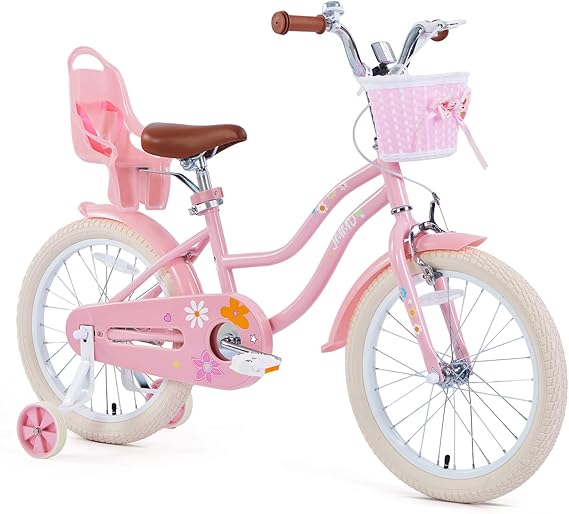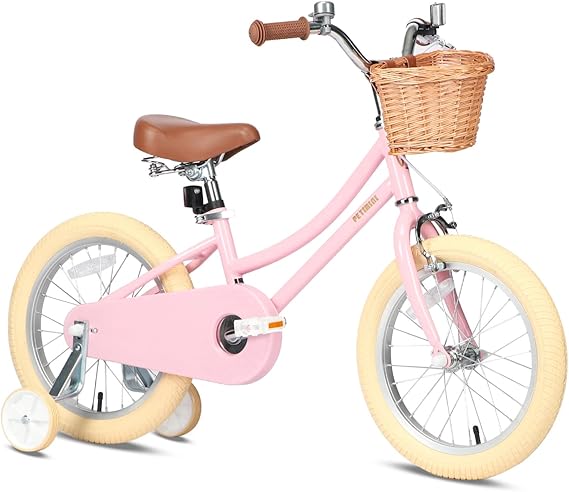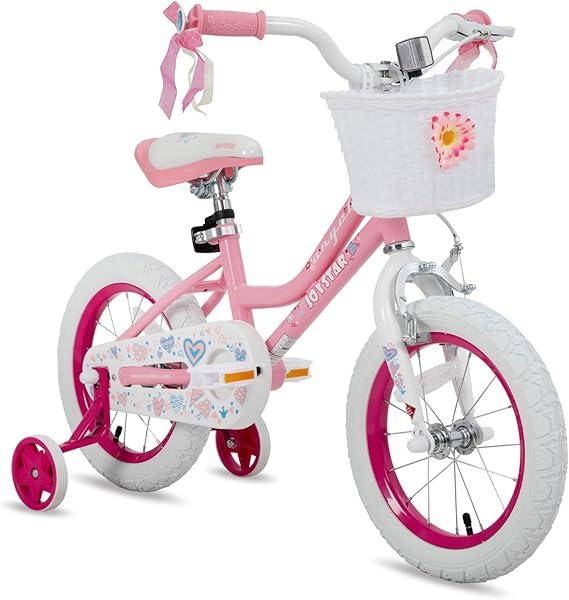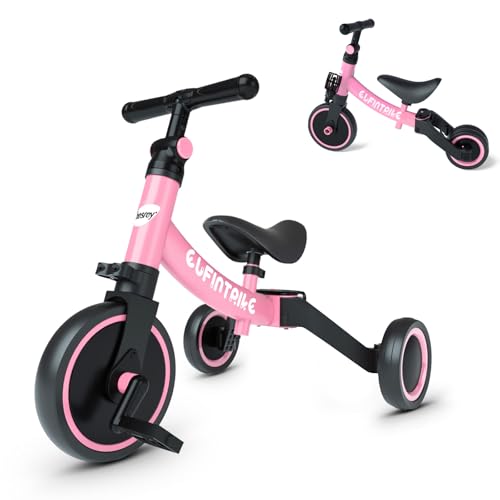Girls’ Bike size chart
Looking for the perfect fit? Check out these Best-Selling Girls’ Bike.






Girls’ Bike Size Chart – A Complete Guide to Finding the Perfect Fit
When it comes to purchasing a bike for a girl, one of the most important aspects to consider is the correct bike size. A bike that fits properly will help ensure a comfortable, safe, and enjoyable riding experience. Finding the perfect fit can be tricky, especially with so many different bike sizes, frame styles, and components available on the market. Whether you’re a parent shopping for a child’s first bike or upgrading to a larger model, understanding how to choose the right size for a girl’s bike is crucial.
We’ll explore how to choose the best bike size for girls based on their height, age, inseam, and the type of riding they’ll be doing. We’ll also provide an easy-to-follow girls’ bike size chart that will help you make an informed decision, ensuring your child’s safety, comfort, and confidence when biking. Let’s dive into the details!
Why Is Bike Size Important?
Choosing the right bike size is more than just a matter of picking something that looks cute or comes in your child’s favorite color. The bike size plays a significant role in your child’s safety and enjoyment while riding. A properly fitted bike will:
- Improve Control and Safety: A correctly sized bike allows your child to handle it better. They will be able to control the bike, navigate turns, and stop easily, all of which are important for safety.
- Enhance Comfort: Comfort is key to enjoying a ride. If the bike is too big, your child will struggle to reach the pedals and handlebars. If it’s too small, they may feel cramped and uncomfortable, which can lead to a lack of confidence and reluctance to ride.
- Boost Confidence: Riding a properly sized bike builds confidence. Your child will feel more comfortable and secure, helping them progress from basic riding to more advanced skills.
Factors to Consider When Choosing the Right Bike Size for Girls
When shopping for a girls’ bike, there are several factors to keep in mind:
1. Height and Inseam
The height and inseam of your child are the two most critical measurements to consider when selecting the right bike size. While age is a general guideline, kids of the same age can vary significantly in height, so measuring their height and inseam ensures a more accurate fit.
- Height: The height measurement indicates how tall your child is and determines whether they will fit on a bike with a certain wheel size. The wheel size typically correlates with a child’s height rather than age.
- Inseam: The inseam is the measurement from the ground to the top of the inner thigh, and this helps determine if your child can safely reach the pedals and the ground when sitting on the bike. A bike that’s too tall might be hard to balance, while a bike that’s too short might feel uncomfortable.
2. Age
While age is an important guideline, it should not be the only factor to consider when choosing a bike. Age is just a starting point, and it’s essential to measure your child’s height and inseam for the most accurate fit.
3. Type of Bike
The type of bike you choose will depend on the kind of riding your child will be doing. Mountain bikes, road bikes, and hybrid bikes are popular options. Each type has different features, such as tire width and frame design, that affect bike sizing.
- Mountain Bikes: These bikes are designed for off-road adventures and typically come with larger tires and suspension systems.
- Road Bikes: Road bikes are lightweight with smooth tires, designed for speed on paved surfaces.
- Hybrid Bikes: Hybrid bikes combine features of both mountain and road bikes, offering comfort and versatility.
4. Adjustability
As your child grows, having a bike with adjustable components, such as the seat height and handlebars, can extend the life of the bike. Some bikes also allow for easy adjustments to the frame size, which can be especially helpful for growing kids.
Girls’ Bike Size Chart: Choosing the Right Bike for Your Child
Here’s a helpful girls’ bike size chart based on height and age. This chart provides a general guideline to help you select the right bike size for your child. Please keep in mind that individual preferences may vary, so it’s important to test the bike and make sure your child can comfortably reach the pedals and the ground when sitting.
| Wheel Size | Age Range | Height Range | Recommended For |
|---|---|---|---|
| 12 inches | 2-4 years | 30-39 inches | First-time riders, balance bikes |
| 14 inches | 3-5 years | 35-42 inches | Riders learning to pedal |
| 16 inches | 4-6 years | 39-48 inches | Beginner riders, ideal for short trips |
| 18 inches | 5-7 years | 42-48 inches | Comfortable for more experienced riders |
| 20 inches | 6-9 years | 45-54 inches | Confident riders, some experience |
| 24 inches | 8-12 years | 50-58 inches | Advanced riders, ready for longer rides |
12-inch Bikes
Age Range: 2-4 years
Height Range: 30-39 inches
The 12-inch bike is ideal for toddlers and young children who are just starting to learn how to ride. These bikes are designed for balance and come with features like training wheels to help with stability. They often have foot brakes, as young riders may not yet have the strength to use hand brakes effectively.
14-inch Bikes
Age Range: 3-5 years
Height Range: 35-42 inches
The 14-inch bike is a great option for kids who have mastered balance and are ready to pedal on their own. These bikes are typically lightweight and have a low step-through frame, making it easier for younger children to get on and off. They may also have adjustable seats and handlebars for growing kids.
16-inch Bikes
Age Range: 4-6 years
Height Range: 39-48 inches
At this size, kids are becoming more confident in their riding skills. 16-inch bikes are perfect for children who have learned how to ride and are ready for longer rides. These bikes may come with hand brakes and are a great option for kids who enjoy riding on pavement or light trails.
18-inch Bikes
Age Range: 5-7 years
Height Range: 42-48 inches
The 18-inch bike is suitable for more advanced riders who are ready to tackle longer distances or explore different types of terrain. At this stage, kids can ride independently and will appreciate the added comfort and stability that this size offers. Many 18-inch bikes come with gears and improved suspension systems.
20-inch Bikes
Age Range: 6-9 years
Height Range: 45-54 inches
The 20-inch bike is designed for kids with a little more riding experience. It’s great for kids who are starting to ride on more challenging terrain or who are ready to ride on longer trips. At this size, kids will often find bikes with gears and hand brakes that offer more control.
24-inch Bikes
Age Range: 8-12 years
Height Range: 50-58 inches
The 24-inch bike is perfect for older kids and pre-teens who are ready for more advanced riding. At this size, bikes may have more specialized features, such as gears, larger tires, and even suspension systems. These bikes are ideal for kids who want to ride long distances, ride on rougher terrain, or experience cycling in a more serious way.
Tips for Buying a Girls’ Bike
1. Check for Adjustable Features
When buying a bike for your child, consider one with adjustable features such as seat height and handlebars. This can help ensure the bike fits properly as your child grows and will extend the life of the bike.
2. Test Ride the Bike
If possible, have your child test ride the bike to ensure it fits properly. Your child should be able to touch the ground with their feet while sitting on the saddle. If they can’t reach the ground or the handlebars feel too far away, the bike may be too big.
3. Choose a Lightweight Bike
Lightweight bikes are easier for kids to handle and control. Look for bikes with aluminum frames, as they tend to be much lighter than steel frames. This will make it easier for your child to maneuver the bike and become confident in their riding skills.
4. Safety Gear
Don’t forget to purchase essential safety gear, such as a properly fitted helmet, knee pads, and elbow pads. Helmets are especially important for preventing injuries and keeping your child safe while riding.
5. Consider Future Growth
Kids grow quickly, and a bike that is too big will be difficult to ride, while one that is too small may become uncomfortable too quickly. Consider buying a bike with adjustable features or one that your child can grow into.
Conclusion
Choosing the right bike for your child is essential for their safety, comfort, and enjoyment. The girls’ bike size chart is a great starting point, but remember that height, inseam, and type of riding are important factors when determining the best bike for your child. By considering these elements and taking the time to test ride the bike, you can ensure that your child has a great experience on their new bike.
A properly fitted bike will help your child ride confidently and safely, allowing them to enjoy biking for years to come. Happy cycling!
This comprehensive guide includes a detailed girls’ bike size chart, tips for choosing the right bike, and additional advice on safety, fit, and comfort. By following these guidelines, you can be sure your child gets the perfect bike for their needs.






